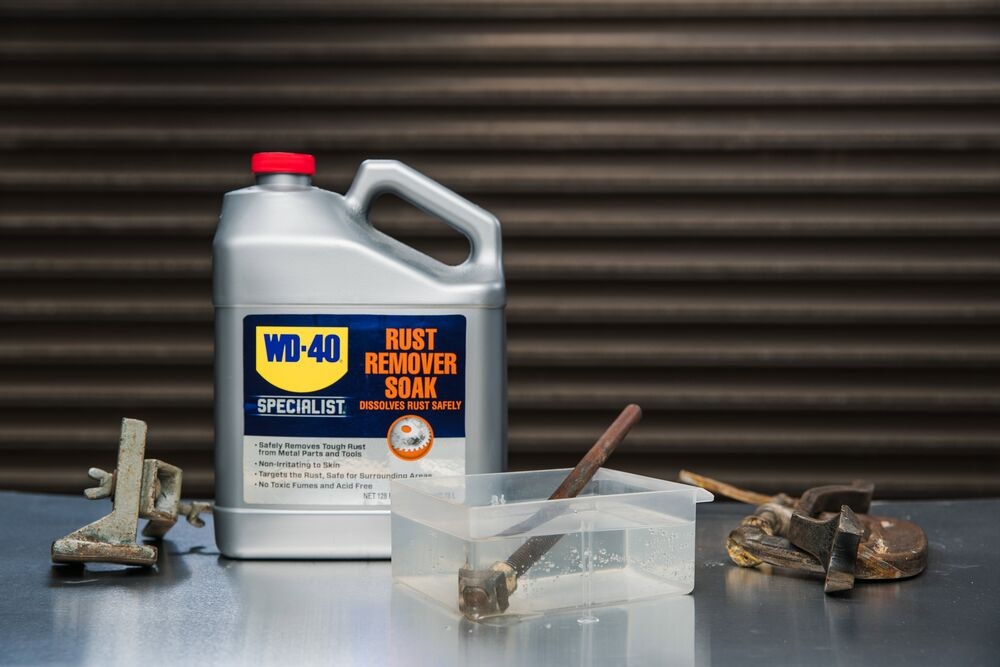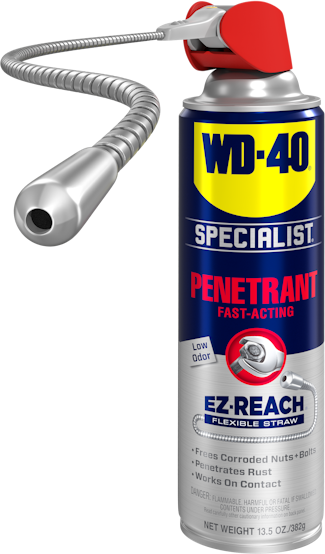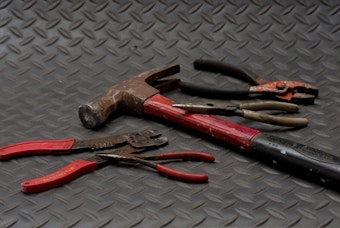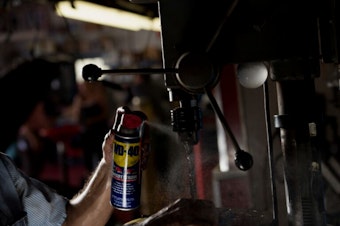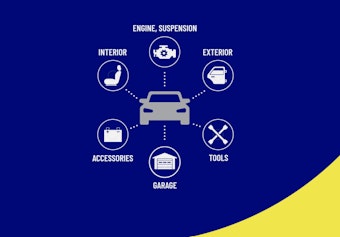Rust Repair: Metal Surfaces
Rust Repair: Metal Surfaces
<< BackFrom workbenches to the working materials used by fabricators, rust spotting and corrosion on metal surfaces isn’t just an eyesore – it’s a flaw that needs fixing if you want to get the Job Done Right®. Rust is a common problem for metal surfaces, especially those that are exposed to moisture and oxygen. When rust forms, it weakens the metal and can eventually lead to structural damage. In this blog, you’ll learn how to care for and protect metal surfaces from rust and what tools to use to help you along the way.
Why bother?
Over time, metal surfaces can become corroded, rusty, or stained – especially in moist or humid environments. This can make them look unappealing and reduce their functionality. Rust is a form of corrosion that occurs when iron or steel reacts with oxygen and water to form iron oxide. It’s bad for metal because it degrades the material and causes a number of deleterious effects, including:
- Weakening: Rust weakens metal by breaking down the metal's molecular structure. These changes create pits, cracks, and holes which can compromise the metal’s strength and durability. This effect can be especially problematic for metal structures that need to bear weight or withstand stress, such as bridges, buildings, and certain car parts.
- Structural damage: unchecked rust growth can cause structural damage to metal objects and structures. As the rust eats away at the metal, it becomes thin and brittle. This can lead to structural failures or collapse, which can be dangerous and costly to repair.
- Aesthetics: Even small deposits of rust can be unsightly, making metal objects and structures look old, worn, and neglected. For businesses or homeowners who want to maintain a professional or attractive appearance for their property, rust is an adversary that must be held at bay.
- Maintenance costs: The presence of rust can increase the maintenance costs of metal surfaces, tools, equipment, structures, and more. If left unchecked, it can spread quickly and require costly repairs or replacements. Regular maintenance, including cleaning and applying rust inhibitors, can help to prevent or minimize rust damage.
What to do
When it comes to rust, planning & prevention are just as (if not more) important than repair and restoration. Knowing your environment and what effects it can have on your gear is a crucial part of the journey. Salty ocean air, frequent precipitation, fluctuations in temperature and humidity…there’s a lot to factor in, and one of the biggest factors is time itself. Rust can occur in days, weeks, or years and can be most dangerous when it’s “out of sight, out of mind.” In some cases, you can learn what to expect from manuals, technical documents, and other people and professionals working with the same materials…but as is often the case, much knowledge is won through hard experience.
Prevention
The WD-40® Brand was founded on its ability to protect against rust. In 1953, Rocket Chemical Company developed the Original WD-40 Formula to prevent the metal surfaces of rocket propulsion systems from rusting as the super-cooled fuel produced condensation on the exterior. Alongside a multi-use formula brought to you by rocket science, the WD-40 Specialist® Brand has now expanded offerings to aid with rust prevention used in a range of professional categories including manufacturing, farming, industrial, automotive, and more. Here are three products that demonstrate superior performance in rust prevention:
- WD-40 Specialist Gel Lube. This No-Drip Formula offers long-lasting protection that resists water and displaces moisture to prevent rust for up to one year.* The spray gel goes on thick and stays where you spray, making it ideal for use on vertical surfaces.
- WD-40 Specialist Corrosion Inhibitor. An anti-rust spray ideal for preventative maintenance and use in extreme environments such as high humidity. It provides non-drying protection with a long-lasting formula designed to protect metal parts by blocking rust and corrosion for up to 1 year outdoors or 2 years indoors. A must-have for corrosion protection.
- WD-40 Specialist Dry Lube. Known more as a dry lubricant, this formula also conveys long-lasting corrosion protection that does not attract dirt, dust, or oil. Best used where cleanliness is required as the film resists dirt, dust, and oil buildups.
Restoration
Once metal surfaces are affected by rust and corrosion, all is not lost – restoring light and even moderate or significant rust damage is possible with the right tool for the job. WD-40 Multi-Use Product has long been a hallmark in these lines of effort, and below are the steps you can take to restore metal surfaces from a light affliction of rust:
- Begin by cleaning the surface with a metal cleaner or degreaser.
- After cleaning and once the area has dried, spray the Original WD-40 Formula across the surface and let it sit for several minutes.
- Scrub the rusted area with a brush or steel wool until the rust is removed. This step may be repeated as necessary, cleaning and reapplying the product and abraiding until the rust is gone.
- Finally, wipe the area clean with a cloth. Reapply a thin layer of WD-40 Multi-Use Product to act as a barrier between the metal and the moisture in the air, preventing rust from forming.
Follow the above steps when working with light to moderate levels of rust and corrosion, as well as with rust stains or when polishing metal. For more difficult jobs, try out these two superior performance solutions:
- WD-40 Specialist Penetrant. Use on stuck bolts, frozen screws, locked threads & nuts, and other rust-related hardware issues. The fast-acting capillary action penetrates deep into crevices, threads, and seams to break the rust bonds that hold stuck parts together. A favorite among auto mechanics, it’s also used across other fields to save on broken bits and wasted effort.
- WD-40 Specialist Rust Remover Soak. For light, medium, and heavy-duty rust on parts, tools, and components that can be submerged in a container. The formula dissolves rust and restores items and surfaces to bare metal without chipping, scraping, or scrubbing. This rust-removal formula has no toxic fumes, does not use acids or caustic chemicals, is non-irritating to the skin, and is safe to use on most metals. To remove light rust, leave parts in the solution for 1-3 hours. To remove heavy rust, leave parts in the rust removal solution overnight. Do not use on parts that have bluing, browning, or protective oxide paints, as those protective coatings would be removed.
Whether it’s on the job at home, odds are good that you’ll have to tangle with both rust prevention and restoration. Metal surfaces are so utilitarian because they’re simple, durable, and long-lasting – with a little attention and tender care they can stay in the game as long as you care to let them. Have a favorite memory with one of our formulas? Share it in a review on the product webpage and help others know what might work well for them too.
FEATURED PRODUCTS
WANT TO GET MORE TIPS AND TRICKS?
SUBSCRIBE TO THE NEWSLETTER
